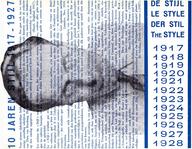Movement

photo credits: Wikimedia Commons
De Stijl (; Dutch pronunciation: [də ˈstɛil], Dutch for "The Style"), also known as Neoplasticism, was a Dutch art movement founded in 1917 in Leiden. De Stijl consisted of artists and architects. In a more narrow sense, the term De Stijl is used to refer to a body of work from 1917 to 1931 founded in the Netherlands. Proponents of De Stijl advocated pure abstraction and universality by a reduction to the essentials of form and colour. They simplified visual compositions to vertical and horizontal, using only black, white and primary colors. De Stijl is also the name of a journal that was published by the Dutch painter, designer, writer, and critic Theo van Doesburg that served to propagate the group's theories. Along with van Doesburg, the group's principal members were the painters Piet Mondrian, Vilmos Huszár, Bart van der Leck, and the architects Gerrit Rietveld, Robert van 't Hoff, and J. J. P. Oud. The artistic philosophy that formed a basis for the group's work is known as Neoplasticism—the new plastic art (or Nieuwe Beelding in Dutch). According to Theo van Doesburg in the introduction of the magazine De Stijl 1917 no.1, the "De Stijl"-movement was a reaction to the "Modern Baroque" of the Amsterdam School movement (Dutch expressionist architecture) with the magazine Wendingen (1918–1931). Source: Wikipedia (en)
associated_with_this_movement 3
Movement - wd:Q207445

